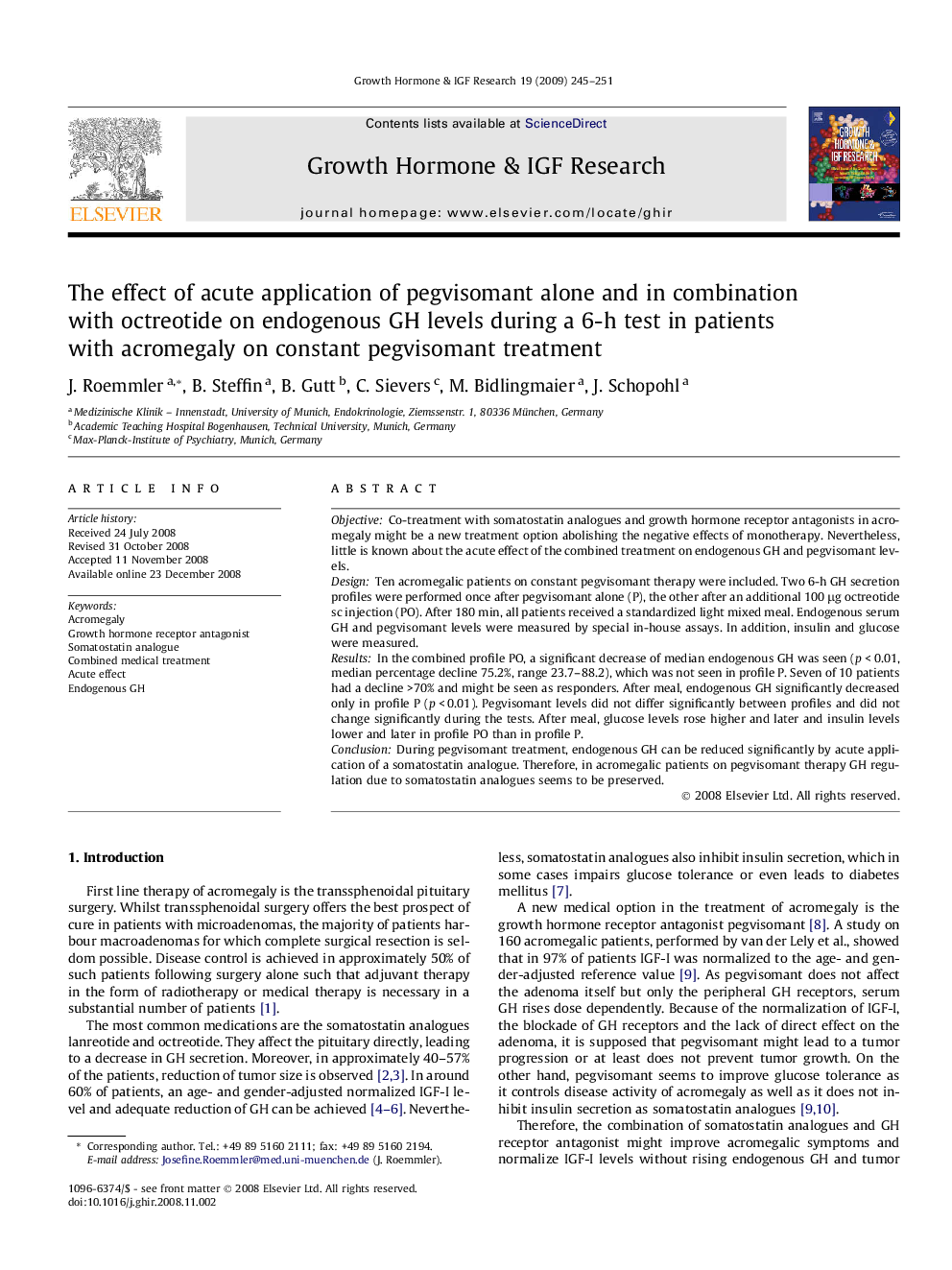| Article ID | Journal | Published Year | Pages | File Type |
|---|---|---|---|---|
| 2803052 | Growth Hormone & IGF Research | 2009 | 7 Pages |
ObjectiveCo-treatment with somatostatin analogues and growth hormone receptor antagonists in acromegaly might be a new treatment option abolishing the negative effects of monotherapy. Nevertheless, little is known about the acute effect of the combined treatment on endogenous GH and pegvisomant levels.DesignTen acromegalic patients on constant pegvisomant therapy were included. Two 6-h GH secretion profiles were performed once after pegvisomant alone (P), the other after an additional 100 μg octreotide sc injection (PO). After 180 min, all patients received a standardized light mixed meal. Endogenous serum GH and pegvisomant levels were measured by special in-house assays. In addition, insulin and glucose were measured.ResultsIn the combined profile PO, a significant decrease of median endogenous GH was seen (p < 0.01, median percentage decline 75.2%, range 23.7–88.2), which was not seen in profile P. Seven of 10 patients had a decline >70% and might be seen as responders. After meal, endogenous GH significantly decreased only in profile P (p < 0.01). Pegvisomant levels did not differ significantly between profiles and did not change significantly during the tests. After meal, glucose levels rose higher and later and insulin levels lower and later in profile PO than in profile P.ConclusionDuring pegvisomant treatment, endogenous GH can be reduced significantly by acute application of a somatostatin analogue. Therefore, in acromegalic patients on pegvisomant therapy GH regulation due to somatostatin analogues seems to be preserved.
